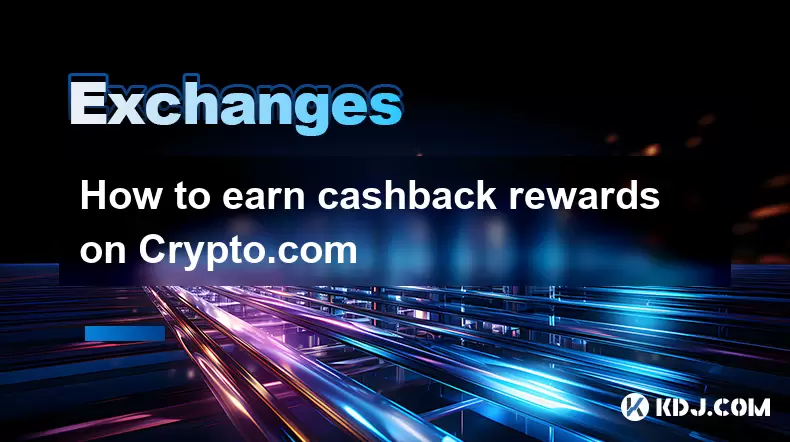-
 Bitcoin
Bitcoin $119000
-2.21% -
 Ethereum
Ethereum $4315
1.01% -
 XRP
XRP $3.151
-3.11% -
 Tether USDt
Tether USDt $0.0000
0.00% -
 BNB
BNB $808.5
-0.71% -
 Solana
Solana $175.8
-4.21% -
 USDC
USDC $0.9999
0.00% -
 Dogecoin
Dogecoin $0.2250
-3.92% -
 TRON
TRON $0.3469
1.77% -
 Cardano
Cardano $0.7818
-3.81% -
 Chainlink
Chainlink $21.47
-2.10% -
 Hyperliquid
Hyperliquid $43.30
-6.81% -
 Stellar
Stellar $0.4370
-2.84% -
 Sui
Sui $3.682
-4.40% -
 Bitcoin Cash
Bitcoin Cash $590.8
2.67% -
 Hedera
Hedera $0.2484
-5.20% -
 Ethena USDe
Ethena USDe $1.001
0.00% -
 Avalanche
Avalanche $23.10
-4.29% -
 Litecoin
Litecoin $119.2
-3.96% -
 Toncoin
Toncoin $3.409
0.90% -
 UNUS SED LEO
UNUS SED LEO $9.016
-1.29% -
 Shiba Inu
Shiba Inu $0.00001304
-3.82% -
 Uniswap
Uniswap $11.18
1.33% -
 Polkadot
Polkadot $3.913
-3.51% -
 Cronos
Cronos $0.1672
-3.08% -
 Dai
Dai $1.000
0.02% -
 Ethena
Ethena $0.7899
-4.70% -
 Bitget Token
Bitget Token $4.400
-1.23% -
 Pepe
Pepe $0.00001132
-5.93% -
 Monero
Monero $257.9
-6.44%
How does leverage trading work on OKX Exchange?
OKX's leverage trading amplifies profits and losses using borrowed funds (margin). Understanding margin calls, liquidation, and risk management tools like stop-loss orders is crucial, as higher leverage ratios increase risk; maximum leverage varies per cryptocurrency.
Mar 17, 2025 at 08:50 am

Key Points:
- OKX offers leverage trading, allowing users to amplify their potential profits (and losses) by borrowing funds.
- Leverage is expressed as a ratio (e.g., 1:10, meaning you control 10 times your invested capital).
- Understanding margin requirements, liquidation, and risk management is crucial for successful leverage trading.
- OKX provides various tools and features to help manage risk, but leverage trading remains inherently risky.
- Different cryptocurrencies on OKX may have different maximum leverage levels.
How Does Leverage Trading Work on OKX Exchange?
Leverage trading on OKX, like other exchanges, allows you to magnify your trading positions. Instead of using only your own capital, you borrow funds from OKX to increase your buying power. This borrowed capital is known as margin. For example, with 1:10 leverage, a $100 investment becomes a $1000 trading position. This means potential profits are amplified, but so are potential losses.
Understanding Margin and Leverage Ratios:
The margin is the amount of your own capital you deposit to secure the leveraged trade. The leverage ratio represents how much borrowed capital is used relative to your own funds. A 1:5 leverage ratio means for every $1 you invest, you borrow $4 from OKX. Higher leverage ratios offer greater potential returns but significantly increase risk. OKX typically displays the available leverage ratios for each cryptocurrency pair.
Opening a Leveraged Position on OKX:
- Choose your trading pair: Select the cryptocurrency pair you wish to trade (e.g., BTC/USDT).
- Select Leverage: Choose your desired leverage ratio from the available options. Remember higher leverage means higher risk.
- Set your order: Place a buy or sell order, specifying the quantity you want to trade. The total position size will be your initial investment multiplied by the leverage ratio.
- Monitor your position: Keep a close eye on the market price and your position's profitability or losses.
Margin Calls and Liquidation:
A margin call occurs when the value of your position falls below a certain threshold, requiring you to deposit more funds (margin) to maintain your position. Failure to meet a margin call results in liquidation. Liquidation is the forced closure of your position by OKX to cover the losses incurred. This can result in significant losses exceeding your initial investment.
Risk Management in Leverage Trading on OKX:
Leverage trading is inherently risky. OKX offers several risk management tools:
- Stop-loss orders: Automatically close your position when the price reaches a predetermined level, limiting potential losses.
- Take-profit orders: Automatically close your position when the price reaches a predetermined level, securing your profits.
- Position sizing: Carefully calculate the amount of capital to invest based on your risk tolerance and market volatility.
Different Leverage Levels for Different Cryptocurrencies:
OKX allows varying leverage levels for different cryptocurrencies. The maximum leverage available depends on factors like the cryptocurrency's volatility and liquidity. Highly volatile cryptocurrencies usually have lower maximum leverage limits to mitigate risk. Always check the available leverage for your chosen trading pair before initiating a trade.
Understanding Funding Rates:
OKX, like many other exchanges supporting perpetual contracts, may charge or credit funding rates. These rates reflect the difference between the perpetual contract price and the spot price of the underlying asset. Funding rates are paid or received based on your position and the market's overall demand for long or short positions.
How to Close a Leveraged Position on OKX:
Closing a leveraged position is straightforward:
- Place a closing order: If you bought with leverage, place a sell order; if you sold short, place a buy order.
- Specify quantity: Enter the quantity you wish to sell or buy to close your entire position or a portion of it.
- Confirm the order: Review your order details and confirm the trade. The profit or loss will be calculated based on the initial investment, leverage used, and the price at which the position is closed.
Frequently Asked Questions:
Q: What happens if my leveraged position is liquidated?
A: If your position is liquidated, OKX will automatically close your trade to cover its losses. You will likely lose all or a significant portion of your initial investment.
Q: Can I use leverage trading with all cryptocurrencies on OKX?
A: No. Leverage trading is available for select cryptocurrency pairs on OKX, and the maximum leverage offered varies per pair.
Q: What are the fees associated with leverage trading on OKX?
A: OKX charges trading fees on leveraged trades, and these fees may vary depending on the trading volume and the cryptocurrency pair. Funding fees may also apply for perpetual contracts. Check OKX's fee schedule for details.
Q: Is leverage trading suitable for beginners?
A: Leverage trading is considered high-risk and generally not recommended for beginners. It requires a thorough understanding of the market, risk management techniques, and the potential for substantial losses. Consider practicing with a demo account before using real funds.
Q: How can I manage risk when using leverage on OKX?
A: Effective risk management includes using stop-loss orders, limiting your position size to a percentage of your total capital, diversifying your portfolio, and thoroughly understanding the market before entering trades. Never invest more than you can afford to lose.
Disclaimer:info@kdj.com
The information provided is not trading advice. kdj.com does not assume any responsibility for any investments made based on the information provided in this article. Cryptocurrencies are highly volatile and it is highly recommended that you invest with caution after thorough research!
If you believe that the content used on this website infringes your copyright, please contact us immediately (info@kdj.com) and we will delete it promptly.
- Japan, Bitcoin, and Treasuries: A New Era of Corporate Finance?
- 2025-08-12 18:30:12
- Bitcoin Bull Market: Decoding the Indicators for the Next Big Move
- 2025-08-12 18:30:12
- Do Kwon's Terra Collapse: From 'Not Guilty' to Guilty Plea?
- 2025-08-12 18:50:12
- Material Efficiency, Traceability, and Trust: The New Pillars of Sustainability
- 2025-08-12 18:50:12
- Do Kwon's Potential Guilty Plea: A New Chapter in the TerraUSD Crypto Collapse Saga
- 2025-08-12 18:55:12
- Bitcoin, Holdings, and the Smarter Web: A New Era of Digital Finance
- 2025-08-12 18:55:12
Related knowledge

How to use margin trading on Poloniex
Aug 08,2025 at 09:50am
Understanding Margin Trading on Poloniex

How to read the order book on KuCoin
Aug 10,2025 at 03:21pm
Understanding the Order Book Interface on KuCoinWhen accessing the order book on KuCoin, users are presented with a real-time display of buy and sell ...

How to read the order book on KuCoin
Aug 12,2025 at 02:28am
Understanding the Basics of Staking in CryptocurrencyStaking is a fundamental concept in the world of blockchain and cryptocurrencies, particularly wi...

How to set price alerts on Kraken
Aug 11,2025 at 08:49pm
Understanding Price Alerts on KrakenPrice alerts on Kraken are tools that allow traders to monitor specific cryptocurrency pairs for price movements. ...

How to earn cashback rewards on Crypto.com
Aug 12,2025 at 02:08am
Understanding Cashback Rewards on Crypto.comCashback rewards on Crypto.com are a feature designed to incentivize users to spend using their Crypto.com...

How to use advanced trading on Gemini
Aug 08,2025 at 04:07am
Understanding Advanced Trading on GeminiAdvanced trading on Gemini refers to a suite of tools and order types designed for experienced traders who wan...

How to use margin trading on Poloniex
Aug 08,2025 at 09:50am
Understanding Margin Trading on Poloniex

How to read the order book on KuCoin
Aug 10,2025 at 03:21pm
Understanding the Order Book Interface on KuCoinWhen accessing the order book on KuCoin, users are presented with a real-time display of buy and sell ...

How to read the order book on KuCoin
Aug 12,2025 at 02:28am
Understanding the Basics of Staking in CryptocurrencyStaking is a fundamental concept in the world of blockchain and cryptocurrencies, particularly wi...

How to set price alerts on Kraken
Aug 11,2025 at 08:49pm
Understanding Price Alerts on KrakenPrice alerts on Kraken are tools that allow traders to monitor specific cryptocurrency pairs for price movements. ...

How to earn cashback rewards on Crypto.com
Aug 12,2025 at 02:08am
Understanding Cashback Rewards on Crypto.comCashback rewards on Crypto.com are a feature designed to incentivize users to spend using their Crypto.com...

How to use advanced trading on Gemini
Aug 08,2025 at 04:07am
Understanding Advanced Trading on GeminiAdvanced trading on Gemini refers to a suite of tools and order types designed for experienced traders who wan...
See all articles

























































































